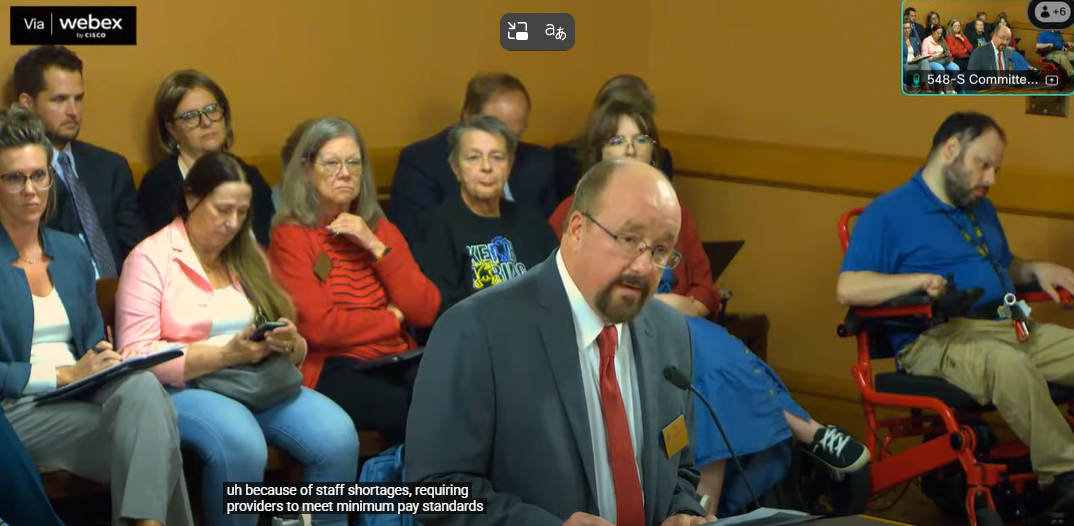Bringing Joy to Older Adults During the Holidays
Lenette Hamm • December 12, 2024
The holiday season is a time of warmth, connection, and celebration. Yet for many older adults, especially those living in nursing homes, it can be a challenging period marked by feelings of isolation or nostalgia for past traditions. This year, let’s consider meaningful ways to bring joy to older adults and ensure they feel the love and care they deserve.
1. Reconnect Through Visits and Calls
Spending time with an older adult can make a world of difference. Whether it’s a quick phone call, a video chat, or an in-person visit, these moments remind them that they are loved and valued. For nursing home residents, a cheerful visit can brighten their day. Consider bringing a small gift, like a festive decoration or a framed photo, to personalize their space and evoke positive memories.
2. Create Shared Experiences
Holidays are built around shared traditions. Invite older adults to participate in activities like decorating cookies, crafting ornaments, or watching classic holiday movies. For nursing home residents, arrange group activities such as caroling or storytelling sessions where they can share their cherished memories.
3. Send Cards and Letters
Receiving a heartfelt card can lift spirits and foster connection. Encourage family, friends, and community groups to write holiday greetings to older adults. Nursing homes often welcome these initiatives, and some may have "adopt-a-resident" programs where you can brighten the holidays for someone without family nearby.
4. Offer Practical Help
Many older adults struggle with tasks that become harder as they age. Offer to help with holiday shopping, decorating their home, or preparing meals. If they live in a nursing home, consider donating time or resources to assist with facility-wide celebrations.
5. Celebrate Their Unique Traditions
Every person has unique holiday traditions, and honoring these can be deeply meaningful. Take the time to learn about what the holidays mean to them and incorporate those traditions into your celebrations. Perhaps they’d love to cook a special recipe, attend a religious service, or listen to specific songs that evoke cherished memories.
6. Share Comfort and Warmth
Sometimes, the simplest gestures mean the most. Bring cozy blankets, warm socks, or a favorite holiday treat. These small tokens can provide comfort and remind them of the joy the season brings.
Making the Holidays Bright
Helping older adults feel included and loved during the holidays is a gift that benefits everyone involved. Whether through time, thoughtful gestures, or community efforts, your kindness can create cherished memories and foster a sense of belonging. This holiday season, let’s ensure no one feels forgotten. Together, we can make it a time of joy for all.

On Monday, October 13th, Dan Goodman, Executive Director of Kansas Advocates for Better Care (KABC), delivered testimony before the Robert G. Bethell Joint Committee on Home & Community Based Services & KanCare Oversight. His remarks focused on the urgent need to strengthen Kansas’ long-term care system through sustainable funding and workforce investments. Goodman urged legislators to provide additional funding for the Home and Community-Based Services (HCBS) Frail Elderly waiver , noting projected shortfalls of $27 million in FY26 and $70 million in FY27. Without intervention, hundreds of older Kansans could face placement on a waitlist as early as this fall—delaying access to critical in-home services and increasing the risk of premature institutionalization. He also highlighted the need to support and stabilize the state’s long-term care workforce by exploring innovative approaches used in other states. For example, New Mexico’s Competitive Pay for Professionals program has helped attract and retain workers by linking higher wages to improved reimbursement rates and accountability measures. Goodman suggested Kansas consider similar models to strengthen its caregiving workforce and ensure providers can offer competitive pay. KABC remains committed to advocating for policies that promote quality care, protect older adults, and sustain a strong, well-supported caregiving system across Kansas. Read KABC’s full testimony here: View Testimony (PDF) Watch a full recording of the committee here: YouTube Link

On October 1st and 2nd, the 2025 Special Committee on Health and Social Services met, with the first day devoted to nursing home surveying and credentialing. The joint committee of both House and Senate members heard from the Kansas Department for Aging and Disability Services (KDADS), the Long-Term Care Ombudsman, industry representatives from Kansas and out of state, administrators, and contractors. Notably absent were the voices of consumers, their family members, and facility staff , the people most affected by long-term care policy. The committee heard information about: Survey Backlogs and Staffing Challenges KDADS contracts with the federal government to inspect adult care homes for health and safety compliance. KDADS has struggled for years to meet federal requirements, due in large part to recruiting and retaining nurse surveyor positions. More than half of the 60 approved positions were vacant earlier this year. As a result, Kansas currently averages 19.9 months between nursing home inspections , far beyond the federal requirement of 12-15.9 months. With just over 300 federally licensed facilities in the state, timely inspections are critical to protecting residents. To address this, KDADS eliminated 15 vacant positions and raised starting pay: up to $60,000 for multidisciplinary surveyors and $67,000 for RNs . The agency is also considering incentives to encourage more RNs to work as surveyors. Kansas has one of the highest rates of the most serious deficiencies, known as Immediate Jeopardy (IJ) deficiencies, in the nation , citations for situations where resident health and safety are at serious risk. The committee explored the possibility of privatizing the survey process. Resident Rights at Risk Testimony also revealed troubling practices in some nursing homes, including charging residents $200–$300 per month in “pharmacy provider” or “medication set-up” fees if they choose to use an outside pharmacy. This practice undermines residents’ right to choose their own providers and unfairly penalizes private-pay residents, already shouldering an average of $7,000–$8,000 per month in nursing home costs. Involuntary Discharges and the Ombudsman’s Recommendation The Long-Term Care Ombudsman urged lawmakers to expand discharge reporting requirements. As she noted: “Federal regulations require a notice to be sent to our office for a facility-initiated transfer (involuntary discharge) in federally licensed nursing homes, but that is not the case for state licensed homes, assisted livings, home pluses and residential health care facilities. With the help of our office, we can often help resolve the reason for the discharge notice to prevent a resident transfer or support the resident to ensure a transition occurs safely.” The committee heard concerns from representatives of the nursing home industry and decided to delay making a recommendation on this issue, noting that additional information is needed. KABC has advocated for not only strengthening the reporting requirements but also giving residents of assisted living facilities the same right to appeal an involuntary discharge that nursing home residents enjoy. Raising the Personal Needs Allowance The Personal Needs Allowance (PNA) for nursing home residents is a monthly stipend that Medicaid recipients can use for personal expenses. In Kansas, the PNA is just $62 per month. Many residents express concern that this amount is insufficient to cover basic personal expenses such as haircuts or undergarments. An immediate increase to the allowance is needed, along with an ongoing adjustment to keep pace with rising costs. The Long-Term Care Ombudsman recommended a PNA increase to the national average of $72 with an additional annual Cost of Living Adjustment. KABC’s Position KABC will continue to advocate for: • Strong oversight of nursing homes. • Resident rights protections, including freedom of choice in providers. • Central inclusion of residents and staff voices in all policy discussions. You can watch the hearing on the Kansas Legislature’s YouTube channel here . KABC will continue to monitor these conversations closely as the 2026 legislative session approaches.




